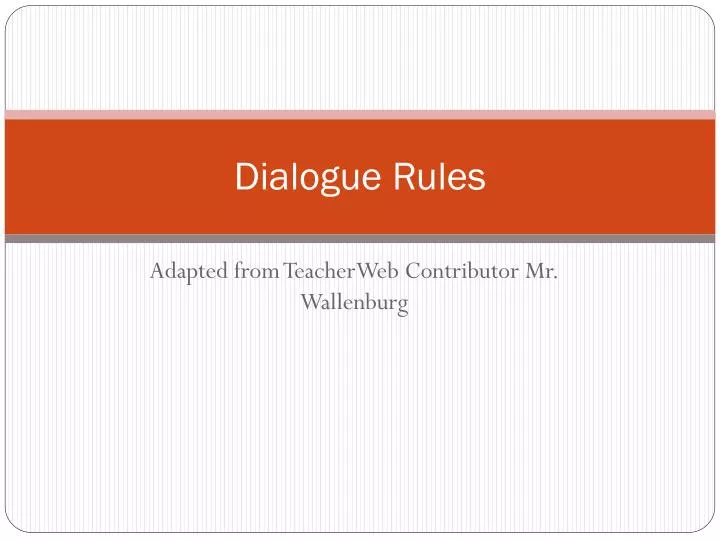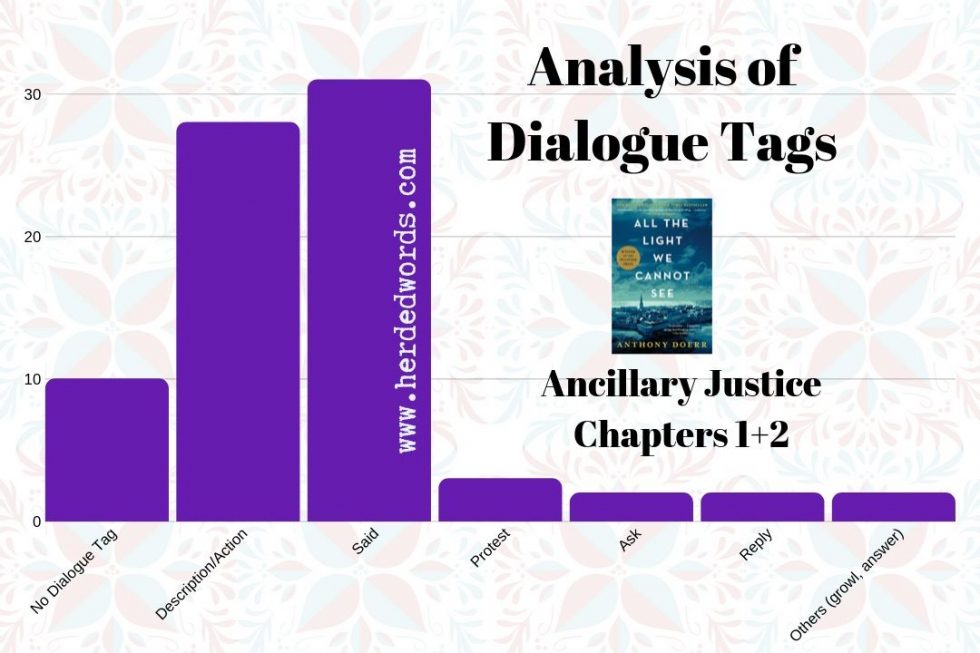

if you only use ‘said,’ or you finish every dialogue line with an action beat - you’ll quickly wear out readers. If you stick to one rule the whole time - i.e.
#Dialogue tags rules how to
Learning how to write good dialogue isn’t about strictly following rules but rather learning what technique to use when, and emphasizing what's actually being said between characters. This tip is all about exceptions to some of the tips we’re sharing here. If bestsellers like Daphne du Maurier's Gothic novel, Rebecca, features ‘said’ on a regular basis, then your book can, too. To never use other verbs might be a drastic measure, but you definitely do not want to overcrowd your dialogue with fancy tags and risk taking readers out of a scene for a brief display of verbal virtuosity. But ‘said’ is far less intrusive than ‘grumbled,’ ‘gasped,’ ‘cautioned,’ ‘lied.’” The line of dialogue belongs to the character the verb is the writer sticking his nose in.

“Never use a verb other than ‘said’ to carry dialogue. The thinking goes that most of the time, readers don’t notice words like ‘said’ because their attention is (rightfully) on what’s actually being spoken.
#Dialogue tags rules download
Download this free cheatsheet of 270+ other words for said to get yourself covered! Pro-tip: While we cannot stress enough the importance of "said," sometimes you do need another dialogue tag. But in the book-writing world, this simple tag is favored over more descriptive ones like ‘exclaimed,’ ‘declared,’ or the many other words used to replace ‘said.’ ‘Said’ gets a bad rap for being boring and overused as a dialogue tag, especially in school. These beats are a commonly used technique so you can find plenty of examples - here’s one from Never Let Me Go by Kazuo Ishiguro. Furthermore, they can illustrate and add context to the conversation, so that readers can gauge the significance of the scene beyond what was being said. They can also be used to manage the pace of a dialogue-heavy scene. They’re included in the same paragraph as the dialogue, to indicate that the person acting is also the person speaking.Īction beats can keep your writing varied, avoiding the need for a long list of lines ending in ‘he said’ or ‘she said’. These are descriptions of the expressions, movements, or even internal thoughts that accompany the speaker’s words. While we’re on the topic of beats, let’s take a look at another kind - action beats. Readers also lose their attention and interest easily in the face of long speeches, so the Three-Beat Rule is definitely one to follow!

Nowadays, a lengthy and unbroken monologue (unless it’s been effectively built up to be an impassioned outburst or revelation) tends to feel dated and awkward. Now, you may point out that classic books often don’t follow this rule - that’s because dialogue conventions have changed over time. Here’s an example from Jane Gardam’s short story, “Dangers”, in which the boy Jake is shooting an imaginary gun at his grandmother: Sometimes they correlate with actual sentences, sometimes they don’t. Dialogue “beats” can be understood as the short phrases in speech that you can say without pausing for breath. Outlined by screenwriter Cynthia Whitcomb, the Three-Beat Rule advises writers to have a maximum of three dialogue beats at a time, after which you should insert a dialogue tag, action beat, or another character’s speech.


 0 kommentar(er)
0 kommentar(er)
